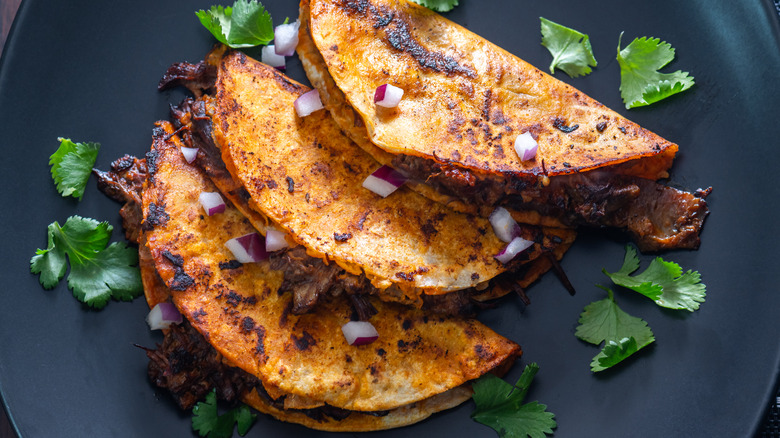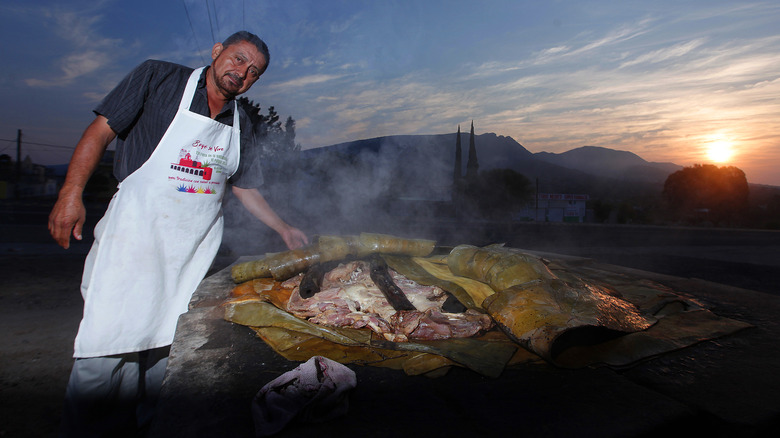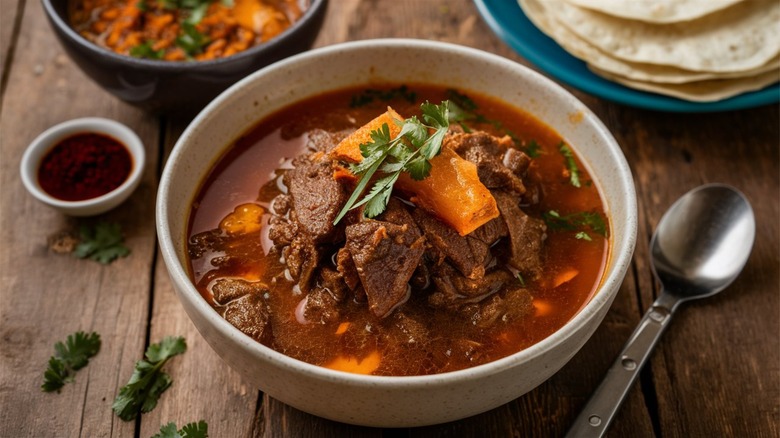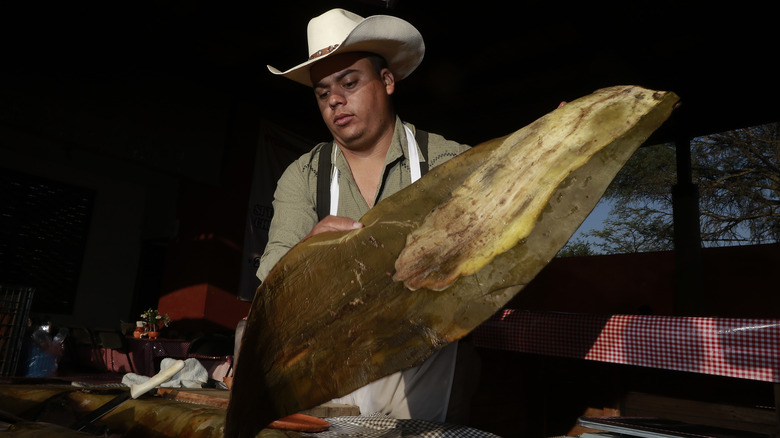What Is Beef Barbacoa, And Is It Different Than Birria?
When it comes to international cuisine, there are countless ways to cook, marinate, and serve a variety of meats. Whether you're enjoying a stew, a sandwich, or just a plate of meat, that meat likely went through an intensive cooking method before it made it to your plate. Birria and barbacoa are two types of cooking methods that, while similar at the surface level, are characterized by notable differences. But perhaps most importantly, birria originated in Mexico while barbacoa is thought to have originated in the Caribbean. Over time, though, barbacoa has become a popular cooking style in Mexico as well.
Barbacoa is slightly more comparable to what we know as barbecue than birria is. Birria is has a thinner consistency than barbacoa, so it's a little soupy and traditionally served as a stew. These days, you'll find it in tacos and even on nachos as it's made its way through the United States. But both methods involve slow-cooking meat to the point where it becomes fall-apart tender.
Birria and barbacoa have different origins
The birria cooking style has roots in Jalisco, Mexico. When the Spanish settled in Mexico, they brought livestock, including goats. But as the goat population increased, it became necessary to utilize goat meat. However, it was quite tough and not so appetizing, so people began tenderizing it by cooking it in a seasoned broth, known as consomé, in a pot over a flame for many hours. Over time, the technique started to become popular in modern days with beef instead of goat, because beef was less expensive — which is how we ended up with beef birria.
The barbacoa style's roots, on the other hand, trace back to Barbados. It's believed that this method was developed by the Taino people, who would cook meat slowly over a fire pit after it had been marinated with various herbs and spices. This method for slow-cooking meat makes it tender, similar to birria, but it lacks the broth that birria has, so it's not as soupy. Over time, the barbacoa method moved into Mexico, and it's still a popular cooking style there today, which explains why it's often associated with Mexican food.
Birria is marinated in flavorful broth
To prepare birria, you need to first prepare the consomé. It can be made with water or beef stock. Essentially, you sear the beef on all sides, then remove it from the pot and set it aside. Vegetables like onions, tomatoes, and chiles are all sautéed in that same pot, then water or beef stock is added and cooks down until it's reduced by half. From there, the entire broth mixture is blended until smooth, then both the beef and the consomé are added back into the pot. The beef is braised in the liquid until it's completely cooked through and tender; this takes several hours. The beef can either be served in the consomé as a stew, which is the traditional method, or it can be removed and shredded for tacos, quesadillas, and other dishes, where the consomé is served on the side. While birria is typically cooked over a flame, it's also commonly cooked in a slow-cooker in the United States because it can be left alone, unlike the flame cooking.
Barbacoa is cooked in a large oven pit
Barbacoa's cooking method involves leaves and fire. Although it originated in the Caribbean, the barbacoa you're likely familiar with follows a Central Mexico-style cooking method. It's cooked in a large oven that's dug into the ground and usually made from bricks; the oven is preheated using wood until it's piping hot. When it's time to add the meat, the meat is first wrapped in maguey leaves (though banana leaves are sometimes used), which is an important part of this cooking method because it adds flavor and also locks in the meat's moisture. It's then placed on grates inside of a large pot, and the grates help keep the meat exposed on all sides.
The pot of meat is lowered into the in-ground oven and topped with the organs from the same animal, as well as different spices and herbs, for added flavor. The oven is then sealed with metal and covered with dirt, so the meat can cook for hours or overnight. The result is tender, fall-apart meat with plenty of flavor — minus the soupy texture of birria.



